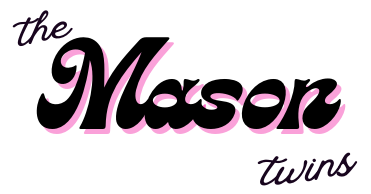The New Products That Can Stop Microplastics
If you are here, you probably know a bit about fast fashion and the issues it presents for the environment. Let us first begin by defining fast fashion. This term refers to clothing that is cheap to both buy and produce, and includes many popular retailers such as Forever21, Zara, and H&M. These fast fashion companies, in order to keep up with the latest trends, often cut corners, resulting in massive amounts of textile waste, toxic water pollution, and other impacts on the environment. One of the biggest sources of fresh water pollution is toxic chemicals from clothing dye and production. With an estimated 25 billon dollar profit in 2015 from fast fashion giant H&M, it is difficult to see what would motivate these companies to move away from their environmentally detrimental but incredibly profitable scheme.
But, the environmental impacts don’t stop at production. Consumers, swayed with excellent marketing tactics, are convinced that they must buy these cheap articles of clothing as soon as they hit the shelf; with patterns and prints that emulate celebrity and catwalk fashion, these inexpensive dupes are deemed the way to remain “trendy.” But trends are fleeting, as is fast fashion clothing. Americans alone throw away around 14 billion tons of clothing per year, or around 80 pounds per person. And, while many believe that donating clothes to second-hand retailers will solve the problem of fast fashion, only around 20 per cent of donated clothes end up being sold. This stems from the sheer amount of donations second hand retailers such as Good Will and Salvation Army receive; more clothing is being produced than is actually needed.
Thrift shopping and buying second hand or vintage is something we fiercely advocate on GV. We have already produced more than enough clothing that is currently circling through second hand markets; we need to utilize these options instead of tunneling more textiles into an oversaturated market. If the demand for new fast fashion decreases, the use of toxic chemicals, dyes, and excess textiles will also decrease. Furthermore, if everyone is encouraged to buy second hand and then donate their old pieces, the “newness” everyone loves about fast fashion will remain in place. Second hand shops will be able to sell more pieces and then acquire new ones; if we can stop throwing fast fashion in the trash and buy/sell from second hand vendors, we will also reduces the billions of tons of textile waste in landfills.
However, there is one problem that buying second hand does not solve. Much of fast fashion as well as other higher end pieces are all made from polyester or other synthetic materials. These synthetic materials contain micro plastics, which can be released into the water supply when washed. Because these fibers are less than 5 mm long, traditional filters will not catch these fibers before reaching the water supply. Synthetic material consumption, particular polyester, is as popular as fast fashion itself; over 60% of the worlds fiber consumption supply is polyester, which means tens of billions of micro plastic fibers around the world are released into the ocean every single day.
More research is needed to conclusively understand the effects of micro plastics on the environment and its inhabitants, however we do know, like any other plastic, these fibers contribute to the pollution of the ocean and will take thousands of years to decompose. Furthermore, a recent study shows that these micro plastics are being ingested by wildlife: 73% of fish caught are found with micro plastics in their stomachs, meaning that these small particles could be found in our food and drink supply.
A huge problem for young people interested in making environmental changes is the price tag that comes with plastic-free clothing. Plenty of new, sustainable clothing brands have cropped up in the past few years, including The Reformation, Hara the Label, and more. The issue relies in finding affordable options for people who cannot afford to spend $200 on a dress, or $60 on a bralette. We recommend that investing in these pieces, if it is affordable for you, is an outstanding way to reduce your plastic contribution; choosing eco-friendly fibers and straying away from synthetics will inherently decrease the demand for production and release fewer micro plastics into the ocean.
However thrifting can still be equally as sustainable. Thanks to two recently discovered companies, there are now products that you can use when you wash your clothing to reduce micro plastic shedding by 99%. Guppyfriend, a product designed by the non-profit organization Stop! Micro Waste, makes clothing bags that protect items, reduce shedding, and catches any fibers that may break off. Cora Ball is another version of this product; inspired by the way that coral filters the ocean, simply toss the ball into your machine and Cora filters and collects micro waste.
Either product (or a combo of the two!) will make significant impacts of the release of micro plastics into the ocean. And, each product is under $30, making it an option even for those who cannot afford high end eco-friendly textiles.
